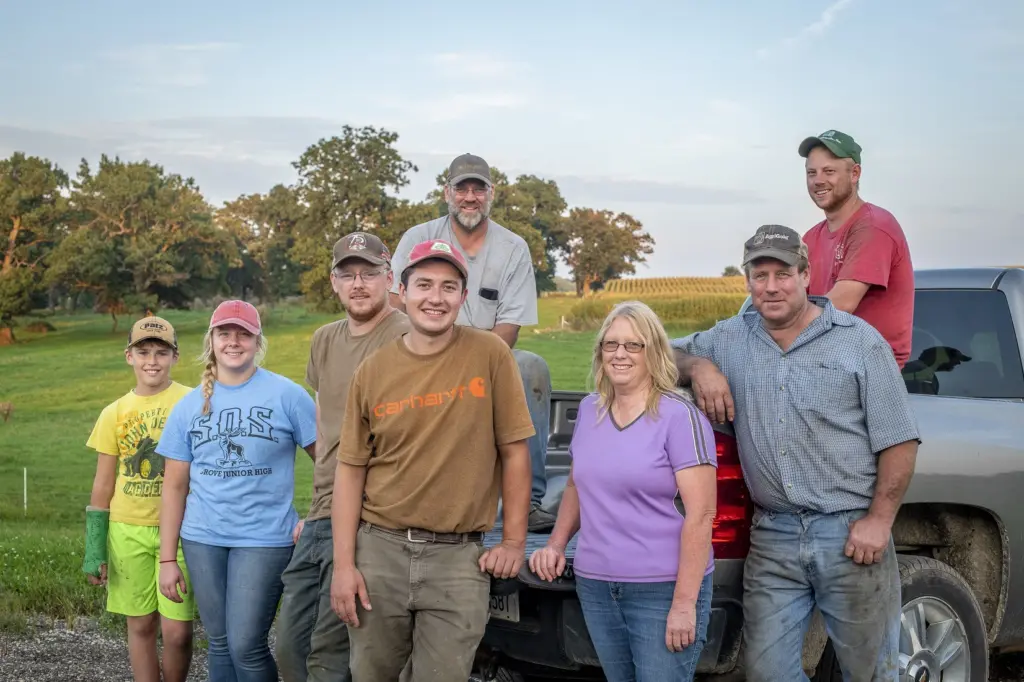The farmhouses of Amy and Ken Hildebrandt and of Ken’s brother, Don, are located at the northernmost tip of Illinois. A mere football toss over the gravel of State Line Road sits the Wisconsin address house of Ken and Don’s sister’s family. Yet there’s no border battle in this tight-knit farm family because, after all, raising and milking dairy cows is a team sport.
Owning one of the few dairies in the county, the Hildebrandt’s started farming in 1981. As the family grew, so did the herd size, which has incrementally expanded from 150 cows originally to 800 today. The biggest expansion occurred in 2017 when Amy and Ken’s children began to express interest in returning to the farm. Confronted with a decision of whether and how to enlarge, the family took the financial plunge to build a new free-stall barn and a separate milking facility, complete with a 40-stall rotary, enabling dozens of cows to carousel around in a circle together until their milking is complete.
“Our kids started to return home, so we began to determine what we should do,” said Amy. “We spent a lot of time before we determined what was right for us, and there were a lot of advantages and disadvantages to weigh, especially with the parlor.”
As the family’s operations grew, roles were defined. Ken oversees milking and repair work in the shop. Don manages the 2,000 acres of cropland used to feed the cows. Amy does bookwork and feeds calves. The kids have set roles,
too, as do the 14 employees.
The family has also incorporated technology to offset what’s often an exhausting line of work that precludes them from venturing too far of the property taking family vacations together. As cows exit the milking rotary, a robotic arm pinpoints udders with a laser and automatically dips them with iodine, saving what otherwise entails manual labor. Hildebrandt Farms also utilizes activity-tracking collars on its heifers and milk cows, continuously monitoring their exercise levels, dietary habits and more via computer.
Measures are also taken to lessen the farm’s carbon footprint and constantly improve the quality and yield of their milk, which is sold in fluid form throughout the region. A manure separator allows them to bed the cows’ stalls with recycled solid waste. They also minimize tillage, use human food byproducts like canola, cottonseed, and soybean meal as part of their cow feed, and they recycle water.
Laughing that the cows are better taken care of than family members, Amy noted, “We work really hard on milk quality and healthy cows. We’re always fine-tuning our bedding choices and milk routine, always looking to do better in having a quality product that tastes good and people want.”
